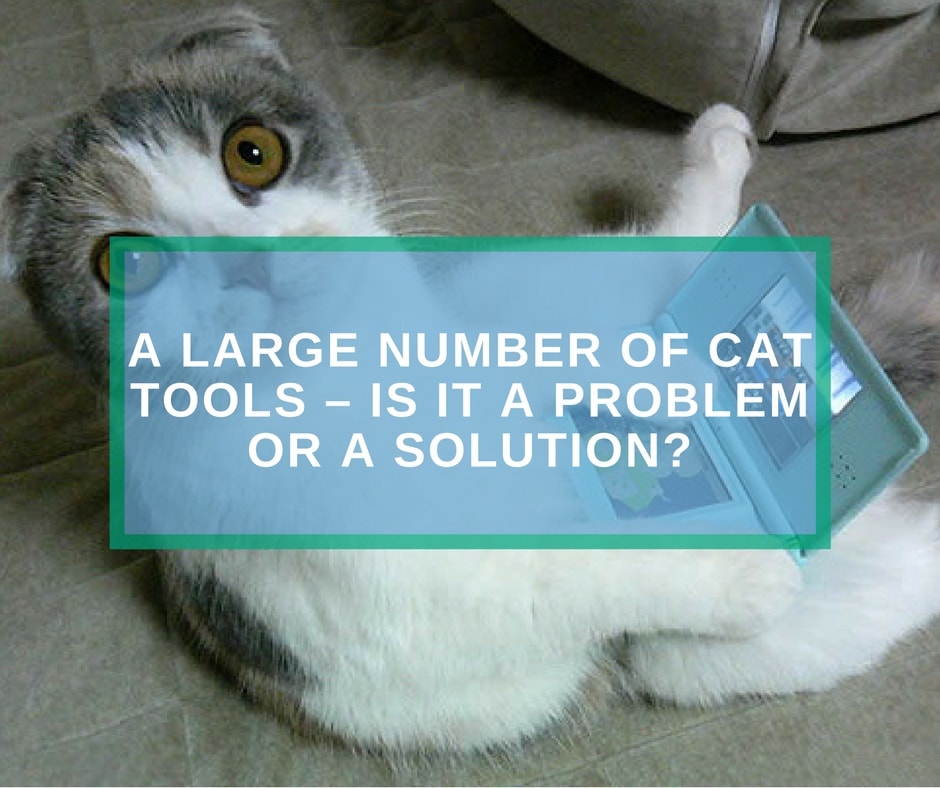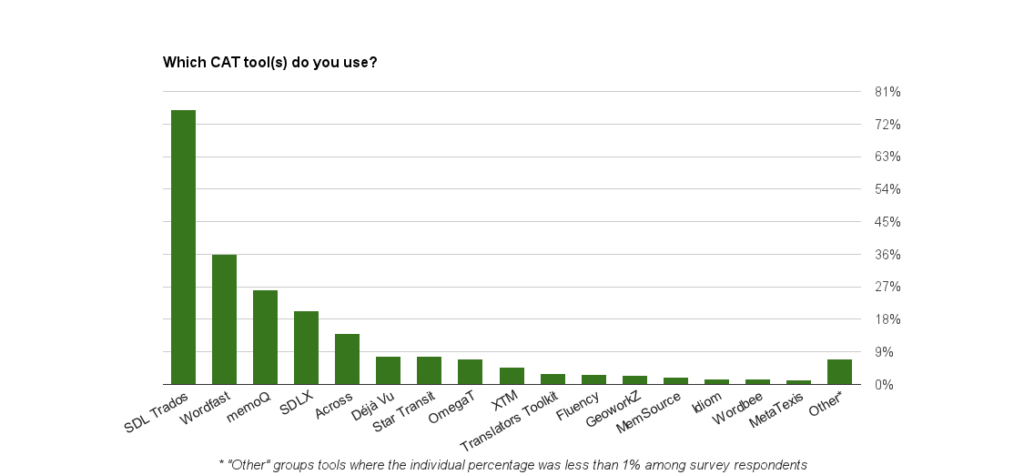CAT tools (computer assisted translation) have a long history and it has been proved that they can make a translator’s life easier. On the average CATs can improve translation performance by 30% and significantly increase translation quality through special QC tools.
The first CAT tool called TSS (Translation Support System) was developed by the U.S. company Alpnet, debuted in the mid-80s. It was an expensive solution affordable only for large companies. IBM was one of the first purchasers of this system. Since that time CAT tools passed through many changes now being available for users globally.
To make CATs more affordable developers apply different approaches to monetization and offer products operating on different platforms (desktop or cloud). Now there are dozens of CATs available on the market. You may find the best one fitting your translation needs, from complex desktop solutions like SDL Trados, MemoQ, Déjà Vu and Across, to relatively simple but powerful cloud tools like Memsource, MateCat, and SmartCAT.
However, if you’re just starting out it will be rather hard to find the right tool and you will have to spend long hours searching for the best option. And this is just a part of a problem! Many established translators work both with direct clients and with several agencies to make a living. On the one hand, some companies already have their own CAT systems developed internally for integration of translation into overall company business processes. On the other hand, there are translation agencies who often force translators to use certain CAT tool. In this regard, the following question arises: “a large number of CAT tools – is it a problem or a solution?”
Necessity in CAT tools
According to the results of the global survey conducted by LingoIO in 2014, only 60% of translators use CAT tools. There are certain fields of translation where CAT tools are less efficient or totally inapplicable. For instance, it is not feasible to buy an expensive CAT tool if you are translating literature with 0% of repetitive text segments. To some extent, this assumption can be applied to advertising and marketing copies. But when it comes to technical, financial and legal texts, CAT tool will certainly make translation processes easier and faster.
Prices for CAT tools
In terms of CAT tools’ cost, it is quite good to have a wide variety of products to choose from. You may select the best tool based on your requirements. If you have complex text processing requirements or large volumes of text in different file formats, it is better to purchase such solution as SDL Trados Studio. If you’re just starting out and cannot afford costly solutions (the cost of SDL Trados Studio 2015 Freelance edition starts from 695 €) you may choose monthly fee solutions like Memsource (€20 per month) or even free solutions like SmartCAT or MateCat. In addition, it is quite common practice when translation agencies provide software licenses for their translators who work remotely.
Nevertheless, a large variety of solutions in the market causes certain problems for us – freelance translators.
Functionality and compatibility of CAT tools
Wide choice of CAT tools with a different set of functions is good when you select a tool for certain tasks. For instance, if you translate websites and apps and have to deal with unusual file formats (other than DOCX or XLSX), you will probably need more complex solutions that offer flexible customizable options to “extract” translatable text from code files. In addition, you may want to create glossary, term base and project database to track performance in a single environment. Some CATs offer all these features out of the box. Others offer only limited functionality – editor, simple TM management tool, and projects database.
Another problem that may occur when you use CAT tool relates to the compatibility of formats. Once you created a good term base or a large translation memory you may use it for similar projects, but what if the next client used to work in another CAT tool that has different native file formats? In this case, you will have to find converters and other software to make previous files applicable for new projects. Moreover, sometimes you can also have problems with different versions of the same product when old TMs and TBs do not work in a new software version. All these things reduce CAT tools efficiency and translation performance in general.
Glitches and errors
It is very hard to ensure 100% reliability of software and hardware. There are many factors having influence on CAT tools operation: from uninterrupted power supply and sound hardware to stable internet connection and virus protection. I have been using various CATs since 2010 and I had several cases when CAT tool errors resulted in failure to deliver translation in due time. Nevertheless, using CATs has many benefits, for instance, if you use cloud CAT and your laptop accidently runs out of battery – you can continue translation from the same segment on another device. If you use desktop CAT, it is hard to lose data because of source file corruption or similar issue – your translation is stored in native CAT files and in TMs, thus you can easily recover it.
How many CAT tools should I use?
Taking into account the above concerns, a freelance translator should be able to work in several CAT tools. For instance, I use four CATs: SDL Trados for regular direct clients, Memsource and MateCat when I translate for agencies and SmartCAT for occasional projects.
Though there are common concepts underlying CAT tool processes, each solution has specific features and options, interface and settings that make it hard to tune into the work straight away. The main asset of any freelancer is time. Learning new technologies is time-consuming, however inevitably necessary. On the other hand, sometimes it is easier to reject the project of a new client who insists on using his own CAT tool that is unfamiliar to you. Nevertheless, you can master two-three most popular CATs to become a more competitive translator.
Most popular CAT tools
According to 2013 Proz survey there are several CATs that are used by the majority of translators (and, as far as I know, by agencies too):
Conclusion
Computer technologies are rapidly developing and they already are an integral part of everyday life. Symbioses of commuter-assisted translation tools and human translators proved to be efficient in many industries that use translation services and today it is not enough to be just a translator. To be a successful freelance translator you should know at least one CAT tool. Of course, CATs have certain disadvantages but, despite minor inconveniences, possibility to choose between CAT tools helps to resolve certain problems of freelance translators.


